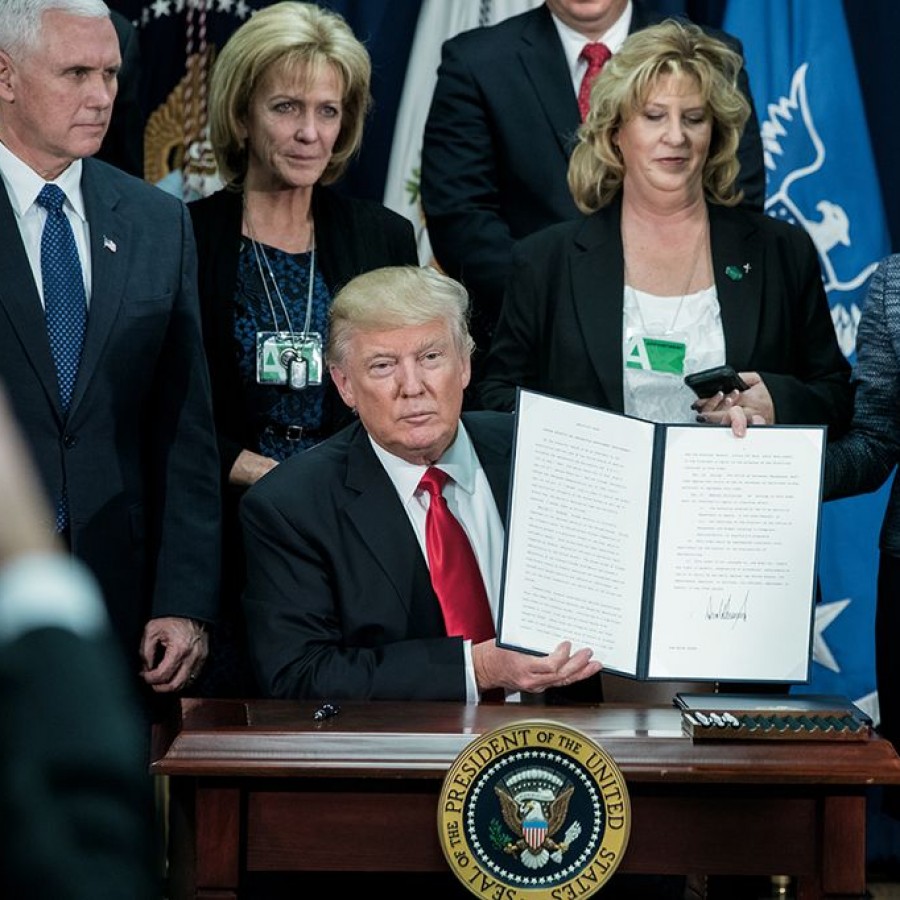Due to the immense controversy surrounding them, Americans frequently debate the utilization of executive orders. Presidents, regardless of party affiliation, abuse executive orders and will only continue to if action is not taken.
But what is an executive order?
An executive order is defined as a signed, composed and distributed mandate created by the president of the United States that oversees activities of the government.
Yet the constitution makes no explicit mention of executive orders.
AP United States Government and Politics teacher Joe Youngbauer is familiar with the origin of executive orders. “There is no explicit statement in the U.S. Constitution that gives presidents the power to issue ‘executive orders,’” he said. “[However,] Article II of the U.S. Constitution grants ‘executive powers’ to a single President of the United States and also calls on the president to ‘faithfully execute’ the laws of the land.”
A consistent increase in contention regarding presidential mandates has emerged since FDR’s presidency, during which 3,721 orders were signed.
Youngbauer believes Presidents sometimes misuse executive orders. “Over time, issuing executive orders has served many important purposes, chiefly the ability of the president to act quickly and powerfully, without navigating the law-making process, but it also has been used to support selfish and unsupported policy,” Youngbauer said.
Some of President Donald Trump’s orders are prime examples of presidential abuse of executive orders.
On average, President Trump signed 51 executive orders per year of his four year administration. This is 15 more than signed in the Bush administration and 16 more than signed in the Obama administration.
While many presidents have signed more executive orders than Trump, some, like PVHS Alumna Maddy Licea, argue Trump uses executive orders inappropriately. “I think the difference… between the Trump administration and previous presidents’ administrations is the use of executive power to enact a hateful agenda,” Licea said. “It is estimated that stopping the Border Wall project will save the country 2.6 billion dollars.”
“These executive orders by the Trump Administration have not only empowered a hateful side of America but also wasted countless amounts of taxpayer dollars as most of his orders did not work,” she elaborated.
Trump’s Border Security and Immigration Enforcement Improvements order, issued Jan. 25, 2017, costs taxpayers billions of dollars and only continues to rise in price. Most taxpayers do not support this order, with 60 percent against the construction of a wall between the United States’ and Mexico’s border. Wasting taxpayers’ dollars is an abuse of presidential power.
But President Trump is not the only president guilty of abusing executive orders.
Not long after the attacks of Sep. 11 2001, President Bush gave an executive order granting unwarranted surveillance power to the NSA. This request permitted the NSA to screen without a warrant the global calls and messages of Americans suspected possessing terrorist connections.
This highly controversial order overstepped the president’s boundaries and invaded the privacy of Americans, allowing the NSA to monitor virtually anyone.
Over time, many administrations have abused executive orders. However, Congress, as the most powerful branch of the federal government, can mitigate this issue.
Congress can help ensure the fairness of the United States’ federal government by establishing a bipartisan committee tasked with challenging controversial orders. If this committee found an executive order to be unreasonable, they could pass it through both chambers of Congress for the House of Representatives and Senate to evaluate and possibly overturn.
Additionally, sometimes out of convenience, Congress allows the president to abuse his power of administering executive orders. Congress must more frequently utilize its constitution-granted powers of law-making and the power of the purse to counteract executive orders deemed as unfair or unnecessary.
Executive orders can be overturned by other branches of the United States’ government. “Executive orders can be declared unconstitutional by the Supreme Court, they can be overturned or reversed by new or subsequent presidents and if they involve any major government funding that can be stopped by Congress, due to their ‘power of the purse,’” Youngbauer stated.
This issue will only prevail if Congress does not help ensure the fairness of the United States’ federal government. Congress must work to cease the excessive use of executive orders and to protect the integrity of the United States’ democracy.









